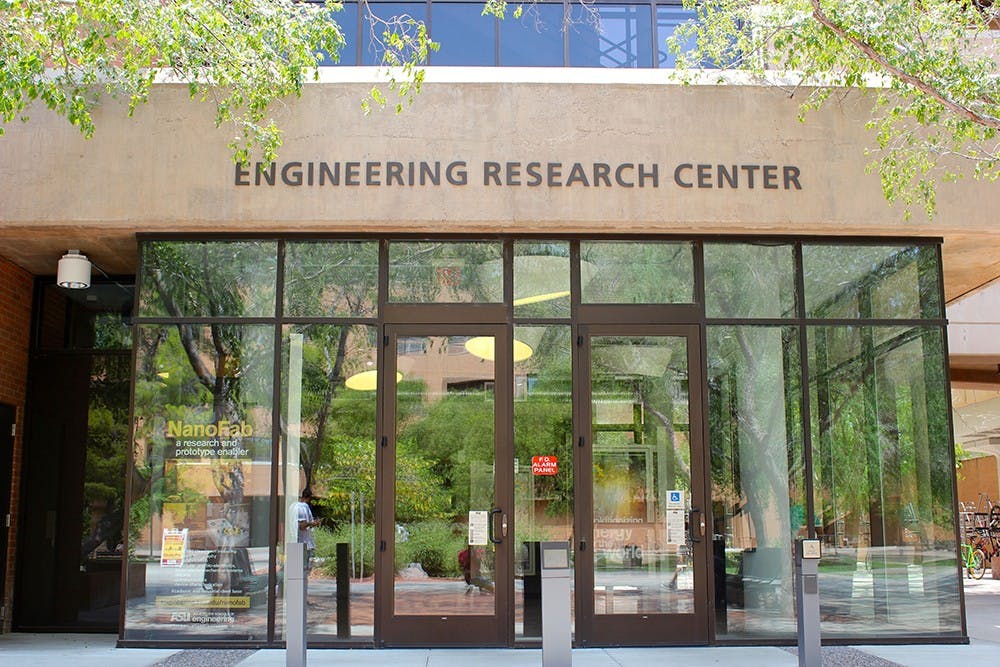In a transformative move for ASU, the National Science Foundation recently granted the school its second engineering research center, making the university the second in the entire nation with more than one of these highly-coveted centers.
ASU has led the Quantum Energy and Sustainable Solar Technologies Center since 2011, with Christiana Honsberg as director and principal investigator. Honsberg said the purpose of Engineering Research Centers such as hers is to tackle widespread issues.
“The engineering research centers are a National Science Foundation initiative that seeks to address large problems,” she said. “Generally, if you’re trying to address large problems, you’re going to make the most progress by addressing multiple facets of that and that’s best done in a center.”
The Center for Bio-mediated and Bio-inspired Geotechnics, headed by civil engineering professor Edward Kavazanjian, will attempt to tackle some of the world’s biggest environmental problems, such as engineering the ground to better support various buildings.
ASU teamed up with University of California, Davis, Georgia Institute of Technology and New Mexico State University to develop the $18.5 million center that will focus on developing new technologies that can be commercialized to enhance national productivity, Kavazanjian said.
Kavazanjian, who has specialized in geotechnical engineering for over a decade alongside his UC Davis and Georgia Tech colleagues, said the emerging sub-discipline of bio-geotechnical engineering will use biological processes and biological materials for geotechnical purposes.
Not only will the center receive the $18.5 million of initial funding from the NSF over the next five years, but ASU and other industrial partnerships have committed funding that raises the total up to $25 million over the same time period, Kavazanjian said.
“At the end of year three, the National Science Foundation will evaluate us and if they’re happy with what we’re doing, they will extend the funding for another five years for a full 10-year period,” he said.
While funding the center will not be an issue initially, Kavazanjian said the real challenge is in the development.
“At the end of 10 years, the center is expected to be self-sufficient,” he said. “Part of our proposal we had to have a plan where, at the end of 10 years, the center would continue to exist without NSF support.”
Although ASU is the leading university for the center, Kavazanjian insisted all four universities are equal partners in both the research and education roles.
“It’s not just research, we do have a substantial education component, where we will be developing modules for K-12 and for classes in community colleges, we’ll be developing curriculum at the graduate level," he said. "We’ll be developing continuing education for working professional engineers and we’ll also have a really strong outreach component to try and enhance the diversity in our field.”
For students, both undergraduate and graduate, who are looking to get involved in research projects, Kavazanjian recommended getting engaged with various faculty members who have a role in the center and pursue roles such as research assistants.
“At the graduate level, there will be research assistantships,” he said. “I suspect we will be supporting anywhere between six and 10 research assistants with tuition and a living stipend. We have a requirement that for every two graduate students we support on the program, we also have to have at least one undergraduate student engaged in our research.”
At the same time ASU’s leadership with CBBG was announced, the NSF revealed the university’s involvement in a separate center: Nanotechnology Enabled Water Treatment System (NEWT).
The center, which is led out of Rice University in Houston, Texas, and boasts partners such as ASU and Yale University, will focus on the economics of water treatment. Paul Westerhoff, NEWT deputy director and ASU vice provost for academic research, said the university will play a key role in this innovative center, focusing on the social acceptance of using nanotechnology in drinking water.
With the implementation of the it’s second Engineering Research Center, Kavazanjian said he believes the university is heading down a path of national success in the research field and will not be stopped anytime soon.
“I think it’s an affirmation of the direction where Dr. Crow has been moving the university since he got here," Westerhof said. "He started ASU on this path which shows the success he’s achieved in establishing us as a major player on the national scene, one of the leading public universities for government-sponsored research.”
CORRECTION: An earlier version of this story misquoted information about NSF funding. This version has been updated with the correct information.
Related Links:
National Science Foundation grants $1.6 million to ASU for infectious disease research
ASU scholars bring Frankenstein back to life
Reach the reporter at Jlsuerth@asu.edu or follow @SuerthJessica on Twitter.
Like The State Press on Facebook and follow @statepress on Twitter.




